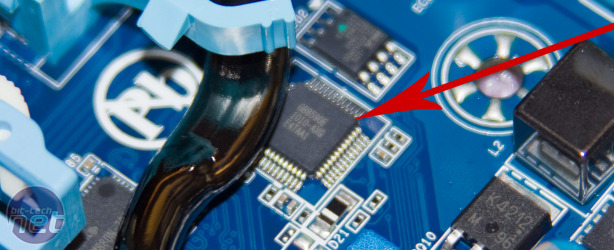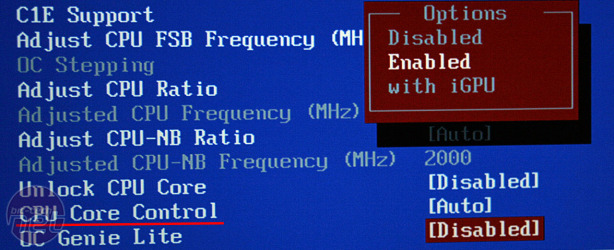Gigabyte
When we recently visited Gigabyte the company claimed its core unlocking method took longer to hit the market because it was evaluating its options. Knowing that hitting the right price is key to any motherboard design, Gigabyte had to evaluate whether it was worth adding the extra chip, like Asus, or whether it could achieve the desired result another way.Gigabyte eventually went with the external chip to replace the ACC circuit and added its own codes and functions to it. Gigabyte claims that this method is superior to the way MSI opted for (see below) and cites most of the advantages that Asus does in terms of reliability and development control, which is key to its particular motherboard design ethic for the last few years.
For a company whose core business is motherboards, Gigabyte surprisingly claims the 890GX is not a particularly popular chipset – much like 790GX apparently - and it didn't plan to sell that many anyway. Instead it is concentrating its efforts on the new 890FX and 880G chipsets, which will launch with the extra core unlocking chip added from the outset.
MSI
MSI has opted for an alternative strategy; it shipped its 890GX motherboards without core unlocking enabled, but has retroactively updated the BIOS of these boards to include support on all shipping boards. No hardware upgrade is needed, which means all 8-series MSI boards sold to date - like Asus - have the capacity to unlock those hidden CPU cores.We recently visited MSI to test its core unlocking on its 890GX-GD65 motherboard, which we have to admit ultimately worked very well even if the beta BIOS was still a bit temperamental.
MSI managed the retro-active fix via simple BIOS update but it's worth pointing out here that when asked MSI would not state how it achieved it to bit-tech. The other companies investigated the software method too and it was suggested to us that MSI used old EC codes and possibly "guessed" the necessary modifications to each of the possibly unlockable CPUs.
This approach doesn't offer the control of in-house hardware and it requires significant BIOS development time - that's still going on - but in contrast MSI saves a couple of dollars on the hardware, which makes them more price competitive, and doesn't need to issue an updated version of its PCB to wait for.
So which is best?
We'll reserve judgement until we test the complete range of 890FX motherboards from the top three here to decide which method works best, and what extra features are included to give you the most from your upgrade cash!
MSI MPG Velox 100R Chassis Review
October 14 2021 | 15:04











Want to comment? Please log in.